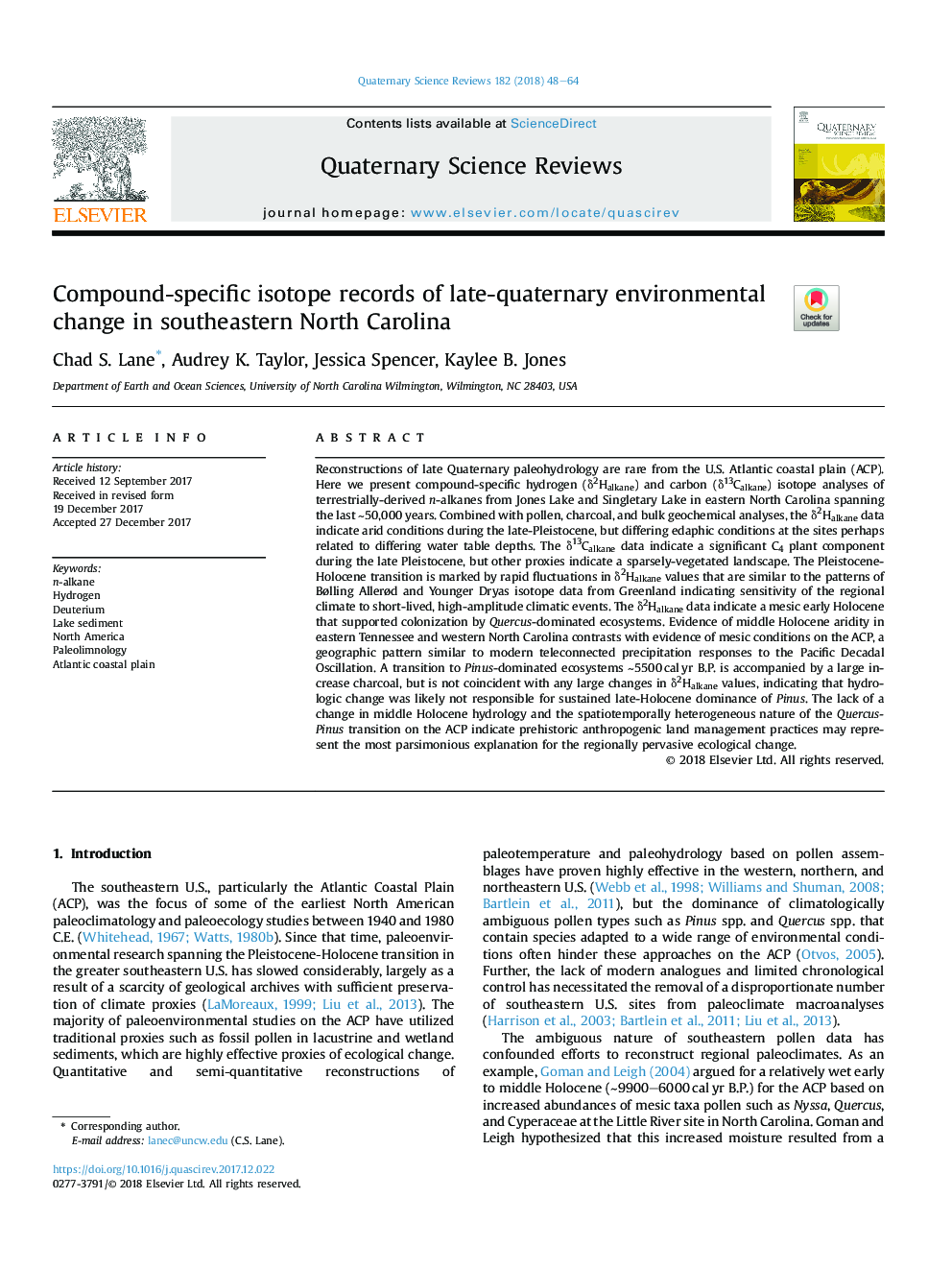| کد مقاله | کد نشریه | سال انتشار | مقاله انگلیسی | نسخه تمام متن |
|---|---|---|---|---|
| 8914988 | 1640753 | 2018 | 17 صفحه PDF | دانلود رایگان |
عنوان انگلیسی مقاله ISI
Compound-specific isotope records of late-quaternary environmental change in southeastern North Carolina
ترجمه فارسی عنوان
سوابق ایزوتوپ خاصی از تغییرات محیط زیست دیر و چهارم در جنوب شرقی کارولینای شمالی است
دانلود مقاله + سفارش ترجمه
دانلود مقاله ISI انگلیسی
رایگان برای ایرانیان
کلمات کلیدی
موضوعات مرتبط
مهندسی و علوم پایه
علوم زمین و سیارات
زمین شناسی
چکیده انگلیسی
Reconstructions of late Quaternary paleohydrology are rare from the U.S. Atlantic coastal plain (ACP). Here we present compound-specific hydrogen (δ2Halkane) and carbon (δ13Calkane) isotope analyses of terrestrially-derived n-alkanes from Jones Lake and Singletary Lake in eastern North Carolina spanning the last â¼50,000 years. Combined with pollen, charcoal, and bulk geochemical analyses, the δ2Halkane data indicate arid conditions during the late-Pleistocene, but differing edaphic conditions at the sites perhaps related to differing water table depths. The δ13Calkane data indicate a significant C4 plant component during the late Pleistocene, but other proxies indicate a sparsely-vegetated landscape. The Pleistocene-Holocene transition is marked by rapid fluctuations in δ2Halkane values that are similar to the patterns of Bølling Allerød and Younger Dryas isotope data from Greenland indicating sensitivity of the regional climate to short-lived, high-amplitude climatic events. The δ2Halkane data indicate a mesic early Holocene that supported colonization by Quercus-dominated ecosystems. Evidence of middle Holocene aridity in eastern Tennessee and western North Carolina contrasts with evidence of mesic conditions on the ACP, a geographic pattern similar to modern teleconnected precipitation responses to the Pacific Decadal Oscillation. A transition to Pinus-dominated ecosystems â¼5500â¯calâ¯yr B.P. is accompanied by a large increase charcoal, but is not coincident with any large changes in δ2Halkane values, indicating that hydrologic change was likely not responsible for sustained late-Holocene dominance of Pinus. The lack of a change in middle Holocene hydrology and the spatiotemporally heterogeneous nature of the Quercus-Pinus transition on the ACP indicate prehistoric anthropogenic land management practices may represent the most parsimonious explanation for the regionally pervasive ecological change.
ناشر
Database: Elsevier - ScienceDirect (ساینس دایرکت)
Journal: Quaternary Science Reviews - Volume 182, 15 February 2018, Pages 48-64
Journal: Quaternary Science Reviews - Volume 182, 15 February 2018, Pages 48-64
نویسندگان
Chad S. Lane, Audrey K. Taylor, Jessica Spencer, Kaylee B. Jones,
